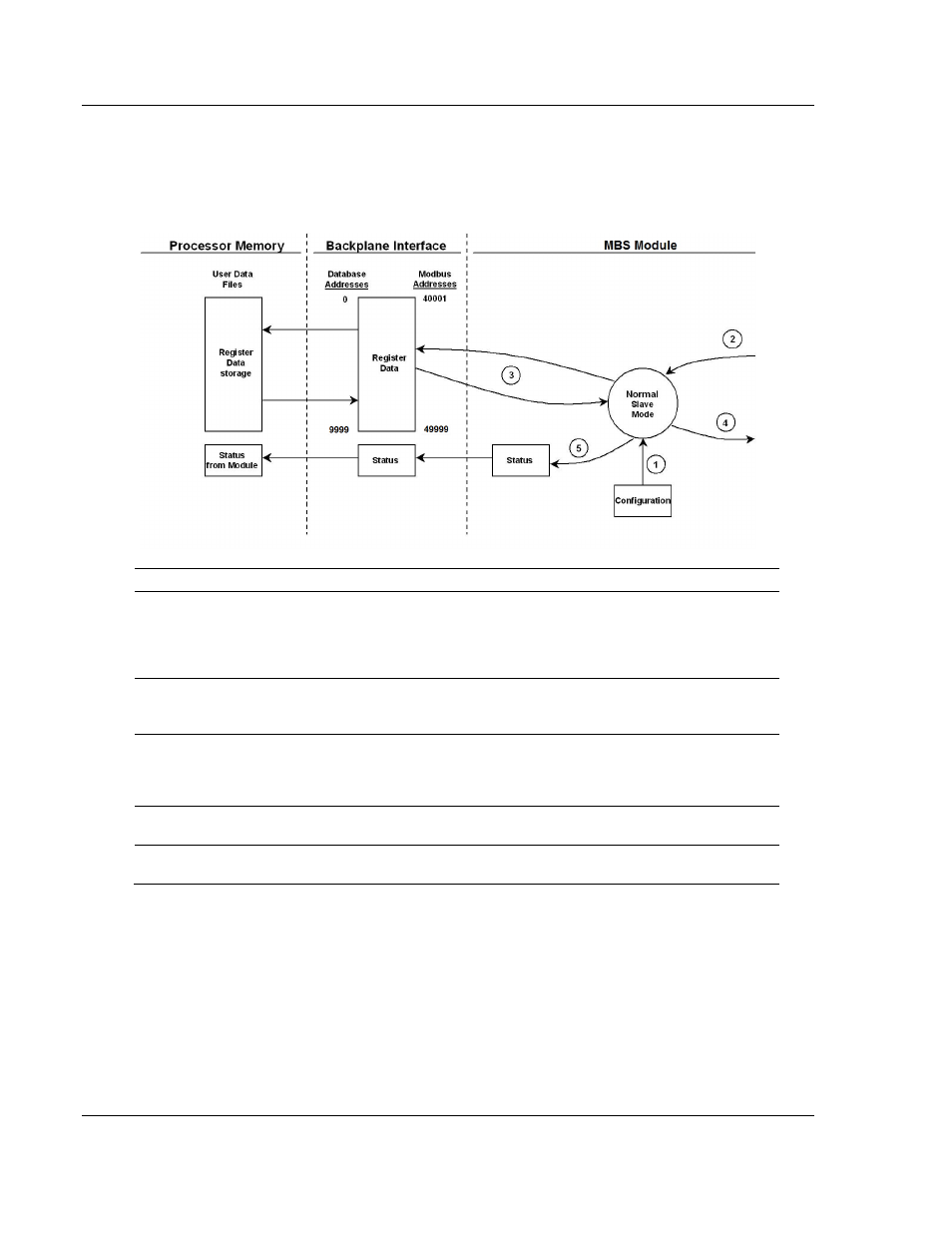Slave mode – ProSoft Technology MVI69E-MBS User Manual
Page 76

MVI69E-MBS Backplane Data Exchange
MVI69E-MBS ♦ CompactLogix Platform
User Manual
Communication Module
Page 76 of 162
ProSoft Technology, Inc.
January 6, 2014
4.4.1 Slave Mode
In Slave driver mode, the MVI69E-MBS module responds to read and write
commands issued by a master on the Modbus network. The following diagram
shows the data flow for normal Slave mode.
Step
Description
1
Any time the module restarts (boots or reboots), the Modbus slave port driver receives
configuration information from the MBS controller tags. This information configures the
serial ports and defines slave node characteristics. The configuration information may also
contain instructions to offset data stored in the database to addresses different from
addresses requested in the received messages.
2
A Modbus Master device, such as a Modicon PLC or an HMI application, issues a read or
write command to the module’s node address. The port driver qualifies the message before
accepting it into the module. Rejected commands cause an Exception Response.
3
After the module accepts the command, the data is immediately transferred to or from the
module’s internal database. On a read command, the data is read from of the database and
a response message is built. On a write command, the data is written directly into the
database and a response message is built.
4
After Steps 2 and 3 have been completed, either a normal response message or an
Exception Response message is sent to the Master.
5
Counters are available in the Status Block to permit the ladder logic program to determine
the level of activity of the Slave driver.
In Slave Pass-Through mode, write commands from the Master are handled
differently than they are in Normal mode. In Slave Pass-Through mode, all write
requests are passed directly to the processor and data is not written directly into
the
module’s database.
This mode is especially useful when both a Modbus
Master and the module’s
processor logic need to be able to read and write values to the same internal
database addresses.
